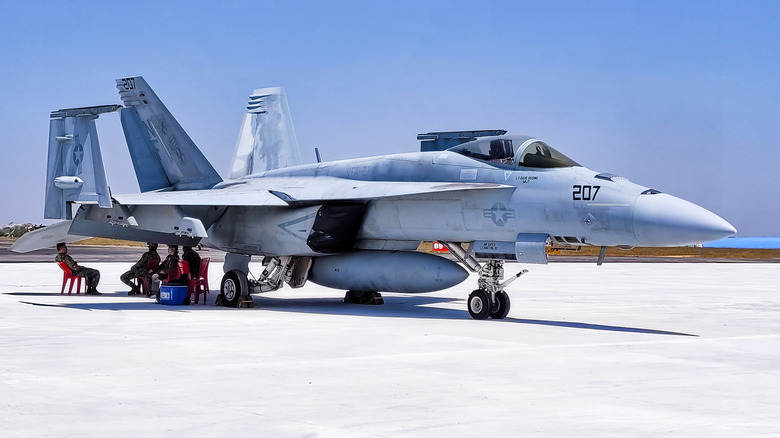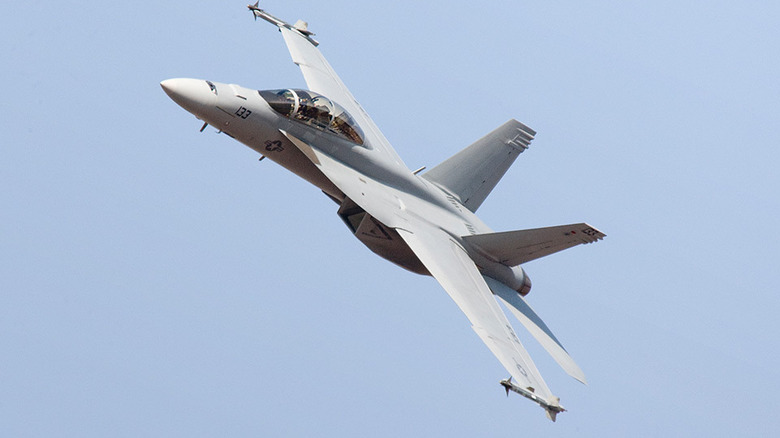The Design Feature That Gave The F-18 Super Hornet The Nickname Rhino
America's armed forces have a long-held tradition of giving military aircraft nicknames (with stories behind them). Notable examples of American planes with nicknames include the F-14 Tomcat (the "Turkey"), the F-16 fighter jet ("Fighting Falcon" or "Viper"), and the B-1 Lancer ("Bone"). Even helicopters haven't been exempt, with machines like the Boeing CH-47 "Chinook" and the McDonnell Douglas AH-64 "Apache" featuring nicknames that remain popular.
The U.S. Navy's McDonnell Douglas (now Boeing) F-18 Super Hornet (also called the F/A-18 Super Hornet) is another aircraft with an interesting nickname: "Rhino." There are many theories about why and how the Super Hornet got this nickname. Some sources say it was given the "Rhino" moniker to differentiate it from the older, smaller version of the aircraft — the original F-18 Hornet — while interacting with both these planes during carrier deck operations. That, however, still did not explain why the F-18 Super Hornet ended up being called the "Rhino."
Until recently, most official U.S. military sources have remained tight-lipped about the origins of the plane's nickname. However, a clarification by the U.S. Defense Logistics Agency might have — for the first time — shed light on the reason the Super Hornet got this nickname. A noticeable design element on the F-18 Super Hornet is a protrusion on its radome (or nose cone). This protrusion — at least from the front of the aircraft — supposedly looks like the horn of a rhinoceros, which eventually led to the F-18 Super Hornet being called the "Rhino."
How did the F-18 series get the Hornet nickname?
The F-18 "Super Hornet" is a successor to the original F-18 Hornet that served the U.S. Navy for years before being phased out. The first reference to the name "Hornet" for the F-18 dates back to 1977, when the then-secretary of the Navy, W. Graham Claytor Jr., revealed that the upcoming F-18 fighter for the U.S. Navy would be called the Hornet. The reason for choosing the name? Well, like its namesake insect, the F-18 Hornet was designed to strike rapidly while producing a sharp sting.
The February 1978 edition of Naval Aviation News magazine disclosed that the flight hardware for the first-generation F-18 went into production in January of the same year. The first finished F-18 Hornet would roll out of McDonnell Douglas' St. Louis factory that September and took its first flight two months later. After three more years of testing, it was September 1981 when the first F-18 Hornets were used by the Navy's training squadron. The first deployment of the F-18 Hornet to aircraft carriers happened in 1985.
The F-18 Hornet received several upgrades during its lifetime with the U.S. Navy, became a reliable part of its strike force, and played a crucial role during the 1991 Gulf War. When its successor came along in 1999, the U.S. Navy decided to add a "Super" tag to the original Hornet, marking the arrival of the F-18 Super Hornet.

